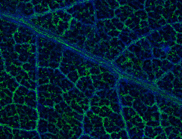CSIRO discovers gold grows on trees

Scientists from CSIRO made the discovery and have published their findings in the journal Nature Communications.
“The eucalypt acts as a hydraulic pump – its roots extend tens of metres into the ground and draw up water containing the gold. As the gold is likely to be toxic to the plant, it’s moved to the leaves and branches where it can be released or shed to the ground,” CSIRO geochemist Dr Mel Lintern said.
The discovery is unlikely to start an old-time gold rush – the “nuggets” are about one-fifth the diameter of a human hair. However, it could provide a golden opportunity for mineral exploration, as the leaves or soil underneath the trees could indicate gold ore deposits buried up to tens of metres underground and under sediments that are up to 60 million years old.
“The leaves could be used in combination with other tools as a more cost effective and environmentally friendly exploration technique,” Dr Lintern said.
“By sampling and analysing vegetation for traces of minerals, we may get an idea of what’s happening below the surface without the need to drill. It’s a more targeted way of searching for minerals that reduces costs and impact on the environment.
“Eucalyptus trees are so common that this technique could be widely applied across Australia. It could also be used to find other metals such as zinc and copper.”
Using CSIRO’s Maia detector for x-ray elemental imaging at the Australian Synchrotron, the research team was able to locate and see the gold in the leaves. The Synchrotron produced images depicting the gold, which would otherwise have been untraceable.
“Our advanced x-ray imaging enabled the researchers to examine the leaves and produce clear images of the traces of gold and other metals, nestled within their structure,” principal scientist at the Australian Synchrotron Dr David Paterson said.
“Before enthusiasts rush to prospect this gold from the trees or even the leaf litter, you need to know that these are tiny nuggets, which are about one-fifth the diameter of a human hair and generally invisible by other techniques and equipment.”
CSIRO research using natural materials, such as calcrete and laterite in soils, for mineral exploration has led to many successful ore deposit discoveries in regional Australia. The outcomes of the research provide a direct boost to the national economy.
 Follow
Follow